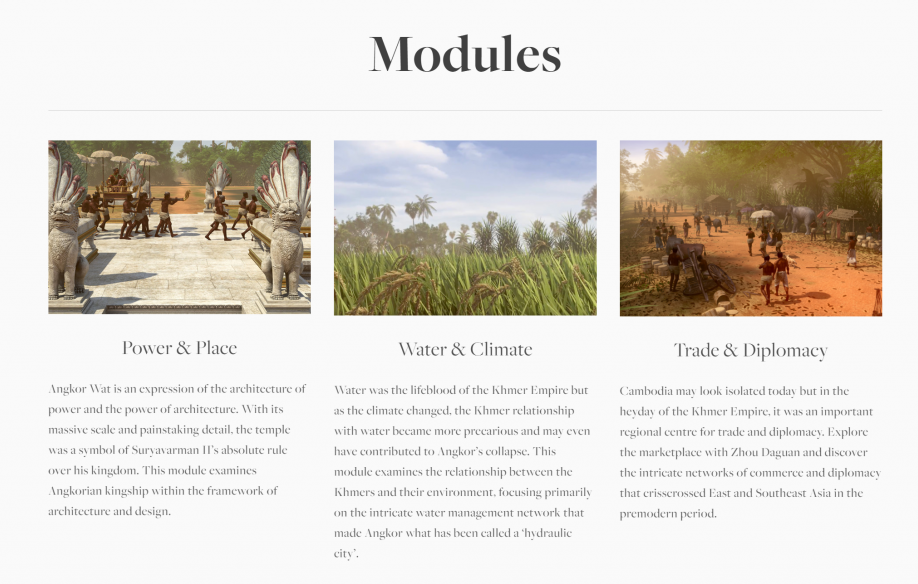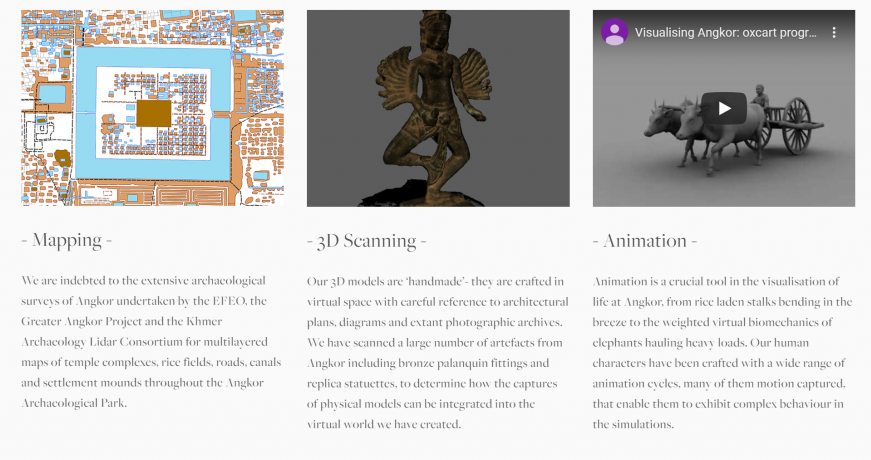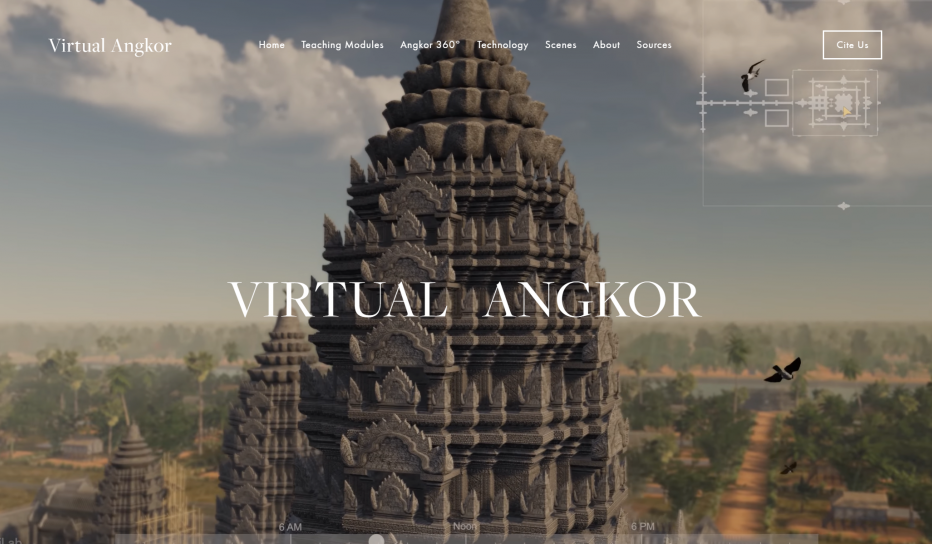The project I chose to explore is called Virtual Angkor. The project revolves around the 3D recreation of the city of Angkor and the elements that helped the city flourish. The project is clearly oriented towards education and using 3D technology to enhance that education.

The goal of Virtual Angkor is to create a 3D world where students will be curious to explore and learn more about Angkor. The project gives students three clear topics revolving around Angkor that can be explored through the 3D world and the suggested readings.
The project is definitely in conversation with the history field as most of it revolves around the history of Angkor. In order to create a realistic representation of Angkor, the creators depended heavily on historical documents like Zhou Daguan’s A Record of Cambodia. Although Zhou Daguan was a Chineses diplomat and therefore an outsider of the city of Angkor, his account provided information that was crucial to understanding how life was conducted in Angkor.
Another important source of information came from maps and artifacts of Angkor. The archaeological maps were processed and digitized to help create an accurate 3D world. Artifacts, such as replica statuettes, were scanned and turned into 3D models.

The most important component of the project were the interactive videos that let viewers click around to immerse themselves in the Angkor world. These videos helped present the project in a way that was appealing to viewers. I found myself amazed by the quality and detail of the videos. It really felt like I was immersed in the city of Angkor.

2 replies on “Exploring Virtual Angkor”
Hi Diana, I liked how you pointed out the most intriguing part of your project and then linked it in your post so we could know right away what you thought was worth taking a peek at. This is often a really helpful thing I’ve found to point out in the face of overwhelmingly large data that digital humanities projects often throw at us. Those videos are super cool!
I like that you simplify the concept of Virtual Angkor, and it’s something that I would read before exploring the website or the simulation deeper. It’s a good blurb!